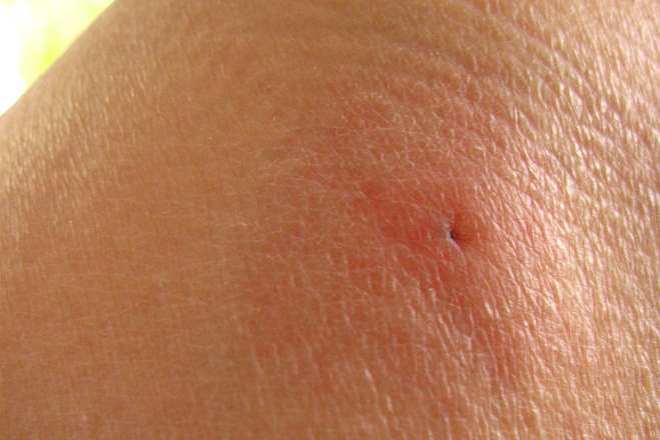


Gently pull out the tick using a slow and steady upward motion.
#Tick bites skin#
Use fine-tipped tweezers to grasp the tick as close to your skin as possible. Remove the tick promptly and carefully.Other infections can be transferred in a few hours or even a few minutes. In general, to transmit Lyme disease a tick needs to be attached for at least 36 hours. But some ticks transmit bacteria that cause illnesses, including Lyme disease and Rocky Mountain spotted fever. Asian Longhorned Ticks - a New Tick in the U.S.Most tick bites are painless and cause only minor signs and symptoms, such as redness, swelling or a sore on the skin.Northeast Regional Center for Excellence in Vector-Borne Diseases.Centers for Disease Control and Prevention (CDC): Ticks, Powassan Virus.All About Ticks: A Workbook for Kids and Their Parents (PDF).Other Languages: Español | Русский | Italiano New York City Tick ID and Removal Wallet Card (PDF).Ticks taking over? Take back your yard (PDF).
#Tick bites manual#
Tick-Borne Diseases in NYC, A Physician's Reference Manual (PDF).Tick-borne Disease Diagnostic Reference: Poster for Providers (PDF).City Health Information: Preventing, Diagnosing, and Managing Tickborne Diseases (PDF, July 2022).If you think you were bitten by a tick or are experiencing symptoms, contact your doctor. Even if the tick tests negative, it is possible you were unknowingly bitten by a different tick that might have infected you.

A tick that tests positive for a tick-borne disease may not have been attached long enough to infect you.If you have been infected, you may develop symptoms before results are available.Testing ticks for diseases is not recommended because: Contact your health care provider immediately if you develop fever, aches and pains or a rash.These methods can increase the risk of infection. Do not use petroleum jelly (Vaseline®), nail polish remover or heat to remove the tick.After removing the tick, wash your hands and whatever parts of your skin the tick touched with soap and water or rubbing alcohol.Do not handle the tick with bare hands.Gently pull up on the tick with slow, even pressure to ease out the mouth parts.

Do not grab the body of the tick, as that can cause the mouth parts to break off and remain in the skin, leading to an infection.
#Tick bites how to#
If the tick is attached (or stuck) on your skin, watch this video on how to remove ticks and follow these steps: You can then put it in alcohol, put it in a sealed bag/container, wrap it tightly in tape and throw it out, or flush it down the toilet. If a tick is crawling on you, remove the tick and dispose of it. You should shower within two hours of coming indoors to wash off ticks and to make it easier to find any crawling ticks. Your chance of getting sick from a bite is lower if you remove the tick quickly. To learn more visit dec.ny.gov/nyspadĬheck for ticks on yourself, children and pets when returning indoors from tick-infested areas.


 0 kommentar(er)
0 kommentar(er)
